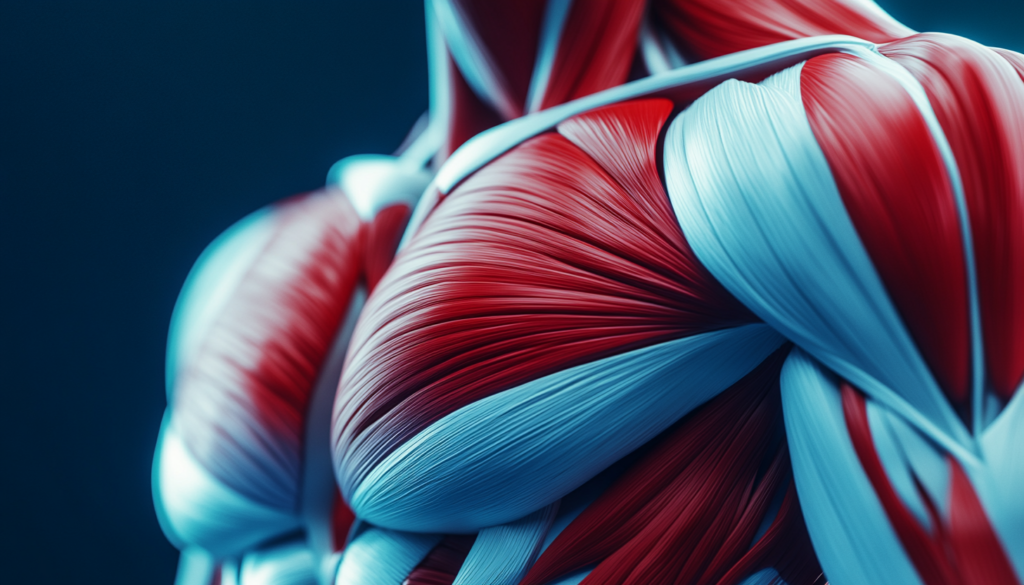The chest muscles, also known as the pectoral muscles, play a large role in a lot of upper body movements, including pushing, pulling, and lifting.
Understanding the anatomy of these muscles is essential for anyone interested in building muscle mass, improving their understanding of human anatomy, or reaping the benefits of chest workouts.
In this article, we’ll explore the anatomy of the chest muscles, including their location, function, and importance in everyday activities.
Understanding the anatomy will help you better build your chest workouts so that you maximize muscle and strength gains in each part of the chest.
The Pectoralis Major: The Primary Chest Muscle
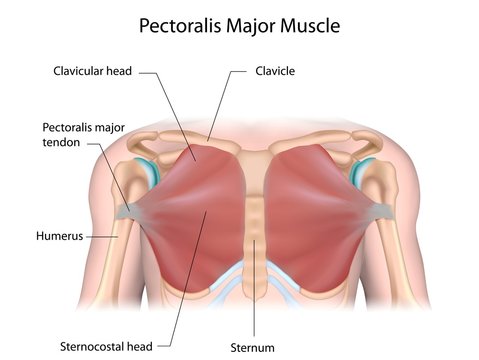
The most important part of the chest muscle group is the pectoralis major, often referred to simply as the pecs. This large, fan-shaped muscle is located in the anterior (front) region of the chest and spans across the upper chest area, attaching to the clavicle (collarbone), sternum (breastbone), and ribs.
Location and Attachment Points
The pectoralis major has two main heads: the clavicular head and the sternal head.
- Clavicular Head: The clavicular head originates from the medial half of the clavicle, or collarbone.
- Sternal Head: The sternal head originates from the sternum and the cartilage of the first six ribs.
These two heads come together to form a tendon that goes into the humerus, the long bone of the upper arm, near its attachment to the shoulder joint.
Function
The primary function of the pectoralis major is to bring the arm across the body, a movement known as horizontal adduction.
Additionally, it assists in different movements of the shoulder joint, including flexion (raising the arm forward) and internal rotation (rotating the arm inward).
The pectoralis major is heavily involved in pushing movements, such as pushing a door open, performing bench presses, or executing push-ups.
Strengthening this muscle will improve upper body strength and power, making it a key target during your chest chest-focused workouts.
The Pectoralis Minor: The Supporting Muscle
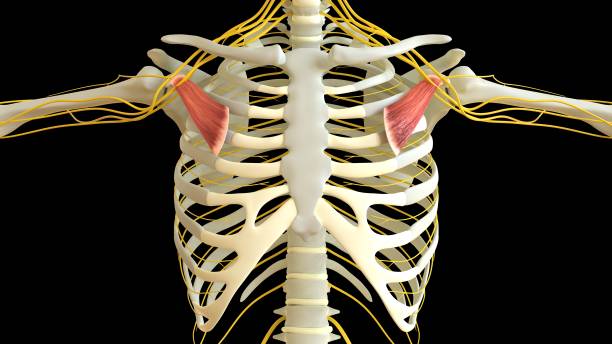
While not as prominent as the pectoralis major, the pectoralis minor is a smaller muscle located deep beneath its larger counterpart.
Despite its size, the pectoralis minor plays a big role in stabilizing the shoulder joint and maintaining proper shoulder mechanics.
Location and Attachment Points
The pectoralis minor starts from the upper ribs, specifically the third, fourth, and fifth ribs, near their cartilaginous attachments to the rib cage. It then inserts into the coracoid process, a bony structure on the scapula (shoulder blade).
Function
The main function of the pectoralis minor is to depress and stabilize the scapula, or shoulder blade.
This muscle works together with other muscles of the shoulder girdle to help properly align the shoulder, and help the function of the shoulder joint during arm movements.
The pectoralis minor also assists in forward movement of the shoulder joint, such as reaching forward or lifting objects overhead.
Strengthening and conditioning this muscle can help prevent shoulder instability and improve overall shoulder function. It’s a great way to help prevent injury when you’re lifting.
The Serratus Anterior: Aiding in Shoulder Movement

The serratus anterior is a thin, serrated muscle located on the lateral (outer) part of the chest wall.
While not traditionally considered a chest muscle, its actions and contributions to shoulder movement mean we have to include it when discussing chest anatomy.
Location and Attachment Points
The serratus anterior originates from the outer surface of the upper eight or nine ribs and goes into the medial border of the scapula, spanning from its superior angle to its inferior angle.
Function
The main purpose of the serratus anterior is to protract, or move forward, the scapula along the rib cage.
This movement, known as scapular protraction, is essential for reaching, pushing, and punching movements, as well as maintaining proper shoulder mechanics during overhead activities.
Additionally, the serratus anterior helps stabilize the scapula against the rib cage, preventing winging of the scapula (where the shoulder blade protrudes outward) during arm movements.
Strength training exercises for the serratus anterior can improve shoulder stability and reduce the risk of shoulder injuries.
Understanding Muscle Synergies
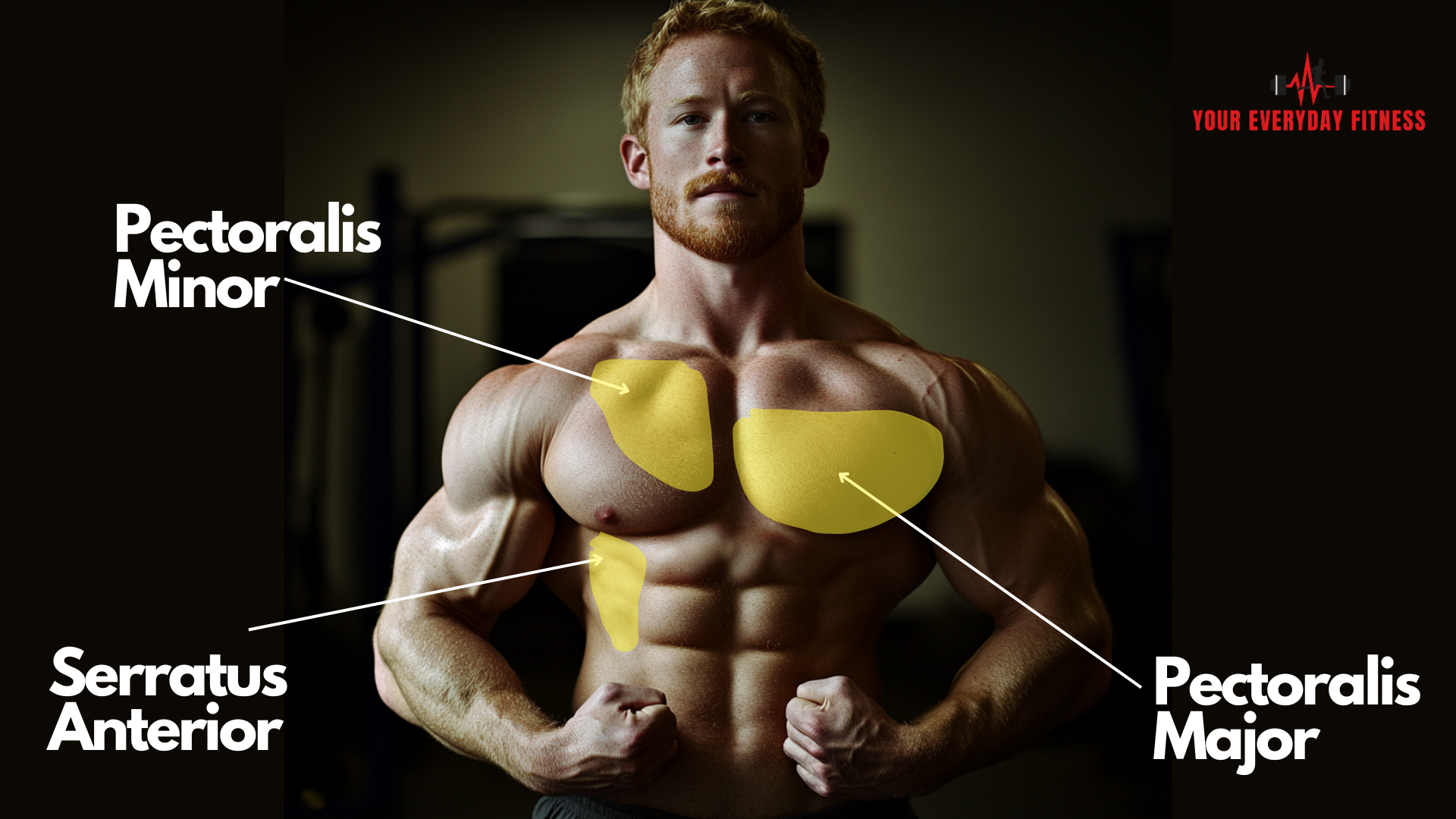
While each of these chest muscles has its distinct location and function, they often work together to help coordinate upper body movements. Understanding these interconnections will help you optimize your training programs and maximize your functional strength.
Performing chest exercises through a full range of motion leads to significantly greater neuromuscular adaptations compared to partial ranges of motion, enhancing both strength and muscle gains in all parts of the chest (Martínez-Cava et al., 2022).
Horizontal Adduction
Horizontal adduction is when the bone moves closer to midline. This occurs in the chest during movements like chest flys.
The pectoralis major is the primary mover in horizontal adduction of the arm, but it is assisted by the pectoralis minor and the serratus anterior, which help stabilize the scapula and maintain proper shoulder mechanics during the movement.
Shoulder Stability
The pectoralis minor and the serratus anterior play crucial roles in stabilizing the scapula and maintaining proper alignment and function of the shoulder joint during many different arm movements.
These muscles work together to prevent excessive movement or instability of the shoulder, allowing you to do chest workouts without shoulder injuries.
Integrated Training Approaches
Doing exercises that target multiple chest muscles simultaneously can enhance muscle activation, improve functional strength, and reduce the risk of imbalances or compensatory movements.
Compound exercises such as push-ups, bench presses, and dumbbell workouts like flies and crush grip presses engage multiple chest muscles simultaneously, helping for a more balanced development of muscle, and functional performance.
By understanding the interconnectedness of the chest muscles, you can make more effective training programs that address the complexity of the upper body and optimize your gains.
Specific Exercises for Each Part of the Chest Muscles
To effectively target each part of the chest muscles, it’s essential to incorporate a variety of exercises into your chest day workouts.
Performing a few exercises on your chest day for each of the chest muscles makes for a proper workout.
Targeting the Pectoralis Major:
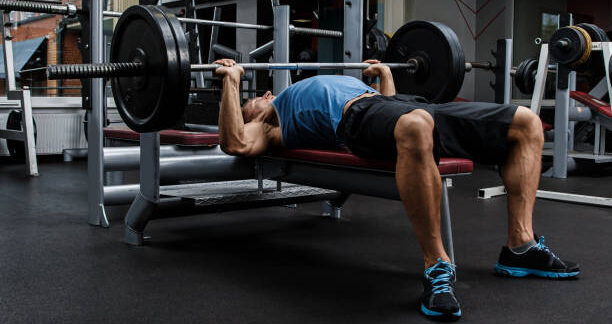
Barbell Bench Press
Research has shown that the pectoralis major can increase in muscle thickness as early as after the first week of high-intensity bench press training, with continued gains in both muscle thickness and strength over 24 weeks (Ferreira et al., 2017).
Muscles Targeted:
- Primary: Pectoralis major (both clavicular and sternal heads), anterior deltoids (front shoulders), triceps brachii (back of the arms).
- Secondary: Serratus anterior, pectoralis minor, various stabilizing muscles of the shoulder girdle.
How to Perform:
- Lie flat on a bench with your feet planted firmly on the ground.
- Grip the barbell with your hands slightly wider than shoulder-width apart, palms facing away from you.
- Lift the barbell off the rack and lower it slowly towards your chest, keeping your elbows tucked close to your body.
- Once the barbell lightly touches your chest, push it back up to the starting position, fully extending your arms.
- Repeat for the desired number of repetitions, maintaining control and proper form throughout the movement.
Tips:
- Make sure your back remains flat against the bench throughout the movement to minimize stress on the lower back. Only begin to arch if you are an experienced lifter.
- Focus on a controlled descent of the barbell, maintaining tension in the chest muscles throughout the movement.
- Avoid completely locking out your elbows at the top of the movement to keep tension on the chest.
Targeting the Pectoralis Minor:
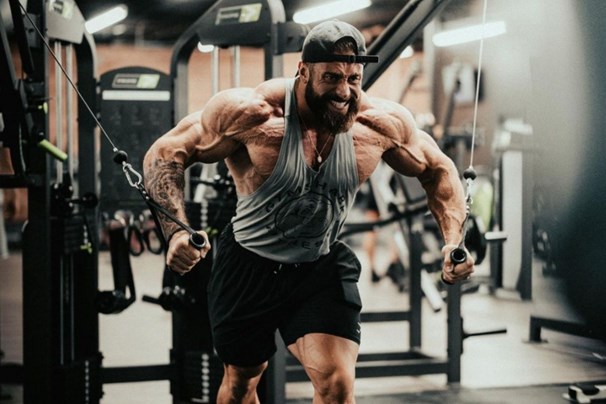
Cable Cross-Over
Muscles Targeted:
- Primary: Pectoralis minor, pectoralis major (especially the sternal head), anterior deltoids.
- Secondary: Serratus anterior, various stabilizing muscles of the shoulder girdle.
How to Perform:
- Set the cable pulleys to the highest position on both sides of the cable machine.
- Stand in the center of the machine, grasping one handle in each hand with your arms extended out to the sides at shoulder height.
- Step forward slightly, leaning your torso forward at a slight angle.
- Pull the handles together in front of your body, crossing them over at chest level.
- Slowly return to the starting position, allowing your arms to move back out to the sides with control.
- Repeat for your preferred number of repetitions, focusing on maintaining tension in the chest muscles throughout the movement.
Tips:
- Keep a slight bend in your elbows throughout the exercise to prevent excessive strain on the joints.
- Focus on squeezing the chest muscles together at the midpoint of the movement to maximize muscle activation.
- Avoid using momentum to swing the weights, instead focusing on controlled, deliberate movements.
Targeting the Serratus Anterior:
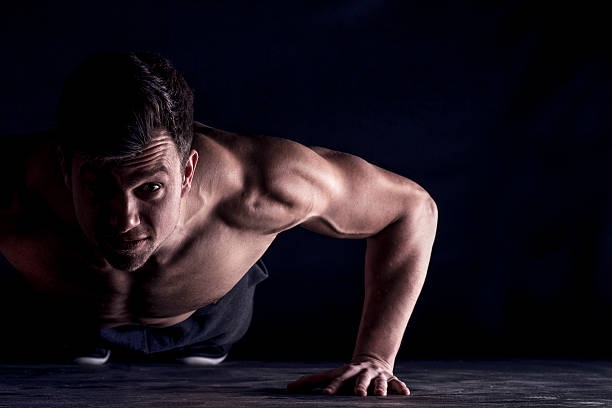
Push-Up Plus
Muscles Targeted:
- Primary: Serratus anterior, pectoralis minor, anterior deltoids.
- Secondary: Pectoralis major, triceps brachii, various stabilizing muscles of the shoulder girdle.
How to Perform:
- Start in a plank position, with your hands directly under your shoulders and your body in a straight line from head to heels.
- Lower your body towards the floor by bending your elbows, keeping them close to your sides.
- As you push back up to the starting position, protract your shoulder blades by pushing your upper back towards the ceiling.
- Hold the protracted position for a moment, feeling the contraction in your serratus anterior muscles.
- Return to the starting position by retracting your shoulder blades and lowering your body back down towards the floor.
- Repeat, focusing on maintaining proper form and control throughout the movement.
Tips:
- Keep your core engaged and your body in a straight line throughout the exercise to avoid sagging or arching.
- Focus on actively pushing the floor away from you as you perform the push-up, emphasizing the protraction of the shoulder blades.
- If necessary, perform the exercise from an elevated surface (such as a bench or countertop) to reduce the difficulty level.
Incorporating these specific exercises into your training routine can help you effectively target and strengthen each part of the chest muscles, which will make sure you are developing all parts of the chest properly.
Remember to start with light weights or bodyweight exercises and gradually increase resistance as your strength and form improve. Always prioritize proper form and technique to minimize the risk of injury and maximize the effectiveness of your workouts.
Conclusion
The chest muscles are a complex group of muscles that play essential roles in upper body movement, stability, and function. Each muscle contributes to the complex biomechanics of the shoulder and the chest.
Understanding the anatomy of these muscles, including their location, attachment points, and functions, is essential for anyone interested in strength training, fitness, or rehabilitation.
By embracing the complexity of chest muscle anatomy and incorporating targeted exercises into your training, you can optimize muscle activation, improve functional performance, and reduce the risk of injury.
Whether you’re a seasoned athlete, a fitness enthusiast, or simply curious about the human body, exploring the details of chest muscle anatomy will help you truly understand the importance of chest workouts, and how to build a strong chest.
Sources
- Ferreira DV, Ferreira-Júnior JB, Soares SR, Cadore EL, Izquierdo M, Brown LE, Bottaro M. Chest Press Exercises With Different Stability Requirements Result in Similar Muscle Damage Recovery in Resistance-Trained Men. J Strength Cond Res. 2017 Jan;31(1):71-79. doi: 10.1519/JSC.0000000000001453. PMID: 27100318.
- Solstad TE, Andersen V, Shaw M, Hoel EM, Vonheim A, Saeterbakken AH. A Comparison of Muscle Activation between Barbell Bench Press and Dumbbell Flyes in Resistance-Trained Males. J Sports Sci Med. 2020 Nov 19;19(4):645-651. PMID: 33239937; PMCID: PMC7675616.
- Rodríguez-Ridao D, Antequera-Vique JA, Martín-Fuentes I, Muyor JM. Effect of Five Bench Inclinations on the Electromyographic Activity of the Pectoralis Major, Anterior Deltoid, and Triceps Brachii during the Bench Press Exercise. Int J Environ Res Public Health. 2020 Oct 8;17(19):7339. doi: 10.3390/ijerph17197339. PMID: 33049982; PMCID: PMC7579505.
- Martínez-Cava A, Hernández-Belmonte A, Courel-Ibáñez J, Morán-Navarro R, González-Badillo JJ, Pallarés JG. Bench Press at Full Range of Motion Produces Greater Neuromuscular Adaptations Than Partial Executions After Prolonged Resistance Training. J Strength Cond Res. 2022 Jan 1;36(1):10-15. doi: 10.1519/JSC.0000000000003391. PMID: 31567719.
- Christian JR, Gothart SE, Graham HK, Barganier KD, Whitehead PN. Analysis of the Activation of Upper-Extremity Muscles During Various Chest Press Modalities. J Strength Cond Res. 2023 Feb 1;37(2):265-269. doi: 10.1519/JSC.0000000000004250. Epub 2022 Aug 24. PMID: 36026487.
- Muyor JM, Rodríguez-Ridao D, Oliva-Lozano JM. Comparison of Muscle Activity between the Horizontal Bench Press and the Seated Chest Press Exercises Using Several Grips. J Hum Kinet. 2023 Apr 20;87:23-34. doi: 10.5114/jhk/161468. PMID: 37229415; PMCID: PMC10203828.
- Akagi R, Tohdoh Y, Hirayama K, Kobayashi Y. Relationship of pectoralis major muscle size with bench press and bench throw performances. J Strength Cond Res. 2014 Jun;28(6):1778-82. doi: 10.1519/JSC.0000000000000306. PMID: 24169471.
- Baig MA, Bordoni B. Anatomy, Shoulder and Upper Limb, Pectoral Muscles. [Updated 2023 Aug 28]. In: StatPearls [Internet]. Treasure Island (FL): StatPearls Publishing; 2024 Jan-. Available from: https://www.ncbi.nlm.nih.gov/books/NBK545241/

